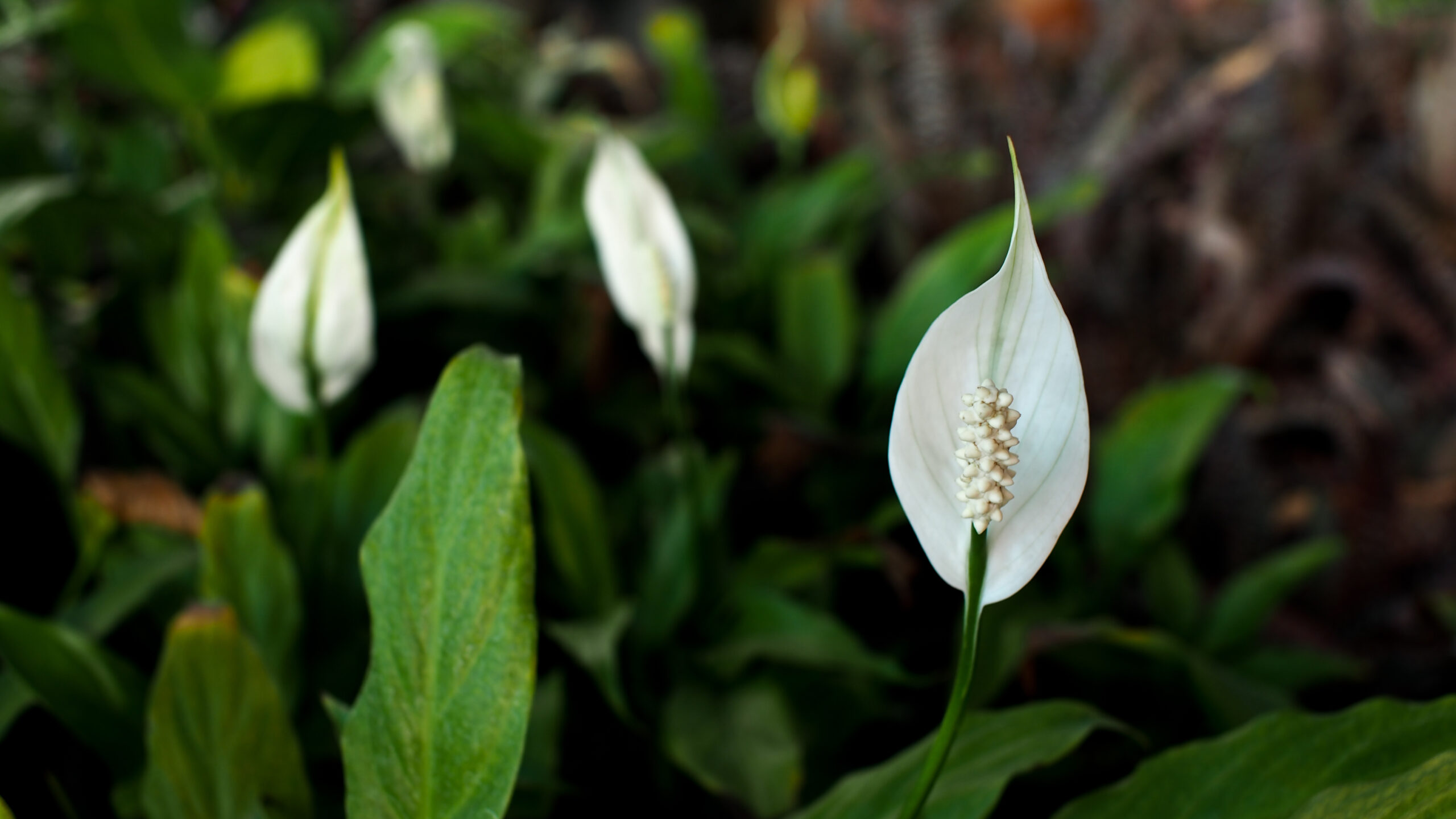Spathiphyllum, also known as the Peace Lilly, is a detoxifying plant used in many indoor environments to help cleanse the air of toxins. Thriving in tropical environments and temperate weather this plant is best kept indoors rather than outdoors. Although the Peace Lily is the most common species of Spathiphyllum, there are 40 different species.
Key Characteristics and Features of Spathiphyllum Plants:
- Appearance: Peace lilies have glossy, dark green leaves that are usually long and lance-shaped. The leaves grow directly from the soil in a clump formation. The plant can reach a height of 1 to 4 feet, depending on the variety and growing conditions.
- Flowers: One of the distinctive features of peace lilies is their white, spoon-shaped flowers, called spathes, which resemble a single petal. The spathes are often mistaken for the plant’s flowers, but they are actually modified leaves. The true flowers are tiny and are found on the spadix, a spike-like structure in the center of the spathe.
- Light Requirements: Peace lilies prefer bright, indirect light. They can tolerate lower light conditions, which makes them suitable for indoor environments with filtered light. However, too much direct sunlight can scorch their leaves.
- Watering: These plants like consistently moist soil but not waterlogged conditions. It’s important to allow the top inch of soil to dry out slightly between waterings to prevent overwatering, which can lead to root rot.
- Humidity: Peace lilies thrive in high humidity environments. They benefit from occasional misting or placing them on a humidity tray filled with water and pebbles to increase the ambient moisture around the plant.
- Temperature: They prefer temperatures between 65-80°F. Avoid placing them in drafty areas or near air vents that can expose them to cold drafts.
- Fertilizing: Feed peace lilies with a balanced liquid fertilizer diluted to half strength once a month during the growing season (spring and summer). Reduce feeding in fall and winter when growth slows down.
- Propagation: Peace lilies can be propagated through division during repotting. Carefully separate the plant into smaller clumps, ensuring each division has roots attached. Plant divisions in fresh potting mix and provide appropriate care.
- Pests: While relatively pest-resistant, peace lilies can occasionally attract spider mites, aphids, or mealybugs. Treat infestations promptly with insecticidal soap or neem oil.
- Benefits: Besides their aesthetic appeal, peace lilies are known for their air-purifying qualities. They can help remove toxins like formaldehyde, benzene, and carbon monoxide from indoor air, making them a popular choice for offices and homes.
Overall, Spathiphyllum plants are low-maintenance and rewarding indoor plants, adding beauty and improving air quality in their surroundings with proper care.
If you have any questions, or would like to order Spathiphyllum plants, feel free to contact us at (352)735-8350.

